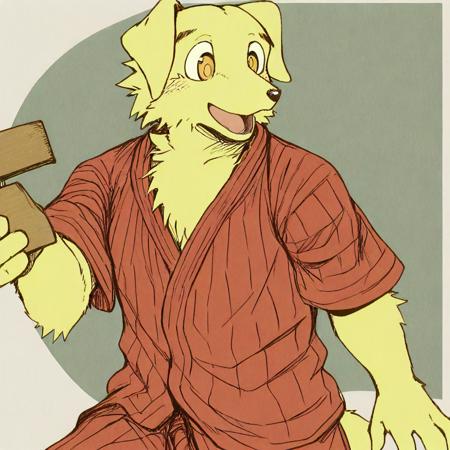![style of Fused glass [SDXL] 372版本v1.0 (ID: 683507)](https://image.1111down.com/xG1nkqKTMzGDvpLrqFT7WA/965a51e8-2d0b-4c53-a00f-943b088d98ac/width=450/22018103.jpeg)
style of Fused glass
Fused glass, also known as kiln-formed glass or warm glass, is a technique used to create stunning and intricate glass artworks. It involves the process of melting and fusing different pieces of glass together in a kiln at high temperatures.
The process of creating fused glass begins with selecting and cutting pieces of glass into desired shapes and sizes. These glass pieces are then arranged and layered on a heat-resistant surface, forming a design or pattern. Additional elements such as glass powders, frits, or enamels can also be added to enhance the visual effects.
Once the glass pieces are arranged, they are placed inside a kiln and heated to temperatures ranging from 1,100 to 1,700 degrees Fahrenheit (600 to 930 degrees Celsius). As the temperature rises, the glass begins to soften and fuse together. This fusion process can take several hours or even days, depending on the size and complexity of the artwork.
After the glass has fused and cooled down, it can be further shaped and finished. This can include techniques such as slumping (shaping the glass over a mold), sandblasting, or polishing to achieve the desired texture and look.
Fused glass allows artists to create a wide range of artworks, including decorative objects, jewelry, wall panels, and sculptures. The technique offers endless possibilities for experimentation and creativity, as artists can play with colors, textures, and shapes to produce unique and visually stunning pieces.
The history of fused glass dates back thousands of years, with evidence of its use in ancient Egyptian and Roman civilizations. However, it wasn't until the 20th century that fused glass gained popularity as a contemporary art form. Artists such as Harvey Littleton and Dominick Labino played significant roles in developing and popularizing the technique.
Today, fused glass continues to be a popular medium for artists and artisans around the world. Its versatility, vibrant colors, and captivating textures make it a favorite among art enthusiasts and collectors alike.
熔融玻璃,也被称为窑成型玻璃或温玻璃,是一种用于创作令人惊叹和精美的玻璃艺术品的技术,它涉及将不同的玻璃碎片在高温下熔化和融合在一起的过程,
制作熔融玻璃的过程始于选择和切割玻璃片成所需的形状和大小,然后将这些玻璃碎片排列和层叠在耐热的表面上,形成一个设计或图案,还可以添加玻璃粉末、颗粒或搪瓷等附加元素以增强视觉效果,
一旦玻璃碎片排列好,它们被放入窑炉中,在1,100至1,700华氏度(600至930摄氏度)的高温下加热,随着温度的升高,玻璃开始变软并融合在一起,这个融合过程可能需要几个小时甚至几天,取决于艺术品的尺寸和复杂程度,
玻璃融合并冷却后,可以进行进一步的成形和加工,这可以包括使用模具进行塑形、喷砂或抛光等技术,以达到所需的纹理和外观,
熔融玻璃让艺术家能够创作各种艺术品,包括装饰物、珠宝、墙面板和雕塑,这种技术提供了无限的实验和创造可能性,因为艺术家可以玩弄颜色、纹理和形状,以制作独特而引人注目的作品,
熔融玻璃的历史可以追溯到数千年前,在古埃及和罗马文明中都有使用的证据,然而,直到20世纪,熔融玻璃作为一种当代艺术形式才变得流行起来,像哈维·利特尔顿(Harvey Littleton)和多米尼克·拉比诺(Dominick Labino)这样的艺术家在发展和推广这种技术方面起了重要作用,
如今,熔融玻璃仍然是全球艺术家和工匠喜爱的媒介,其多样性、鲜艳的色彩和迷人的纹理使其成为艺术爱好者和收藏家的最爱,
描述:
训练词语: style of Fused glass
名称: tbh372-sdxl.safetensors
大小 (KB): 445788
类型: Model
Pickle 扫描结果: Success
Pickle 扫描信息: No Pickle imports
病毒扫描结果: Success
![style of Fused glass [SDXL] 372](https://image.1111down.com/xG1nkqKTMzGDvpLrqFT7WA/965a51e8-2d0b-4c53-a00f-943b088d98ac/width=450/22018103.jpeg)
![style of Fused glass [SDXL] 372](https://image.1111down.com/xG1nkqKTMzGDvpLrqFT7WA/950e95ea-bb88-4bdb-91be-a1bbda3aec23/width=450/22018088.jpeg)
![style of Fused glass [SDXL] 372](https://image.1111down.com/xG1nkqKTMzGDvpLrqFT7WA/3aab2146-686e-47dd-a953-83d3bb410400/width=450/22018095.jpeg)
![style of Fused glass [SDXL] 372](https://image.1111down.com/xG1nkqKTMzGDvpLrqFT7WA/56069960-eb78-418a-a7a6-2b32fedffb72/width=450/22018087.jpeg)
![style of Fused glass [SDXL] 372](https://image.1111down.com/xG1nkqKTMzGDvpLrqFT7WA/b957bfca-ce1a-4261-8c2e-3f48a343c766/width=450/22018109.jpeg)
![style of Fused glass [SDXL] 372](https://image.1111down.com/xG1nkqKTMzGDvpLrqFT7WA/01d43c15-a1ff-4f33-a2ec-10be0bbb3d18/width=450/22018090.jpeg)
![style of Fused glass [SDXL] 372](https://image.1111down.com/xG1nkqKTMzGDvpLrqFT7WA/b0b40ce9-bd7d-47ba-a054-5b293ebd615b/width=450/22018097.jpeg)
![style of Fused glass [SDXL] 372](https://image.1111down.com/xG1nkqKTMzGDvpLrqFT7WA/51a853ee-d0df-467c-ae77-1e891fa23f8b/width=450/22018099.jpeg)
![style of Fused glass [SDXL] 372](https://image.1111down.com/xG1nkqKTMzGDvpLrqFT7WA/784ef2b9-431e-4298-bd35-6e75a0b4a73e/width=450/22018102.jpeg)
![style of Fused glass [SDXL] 372](https://image.1111down.com/xG1nkqKTMzGDvpLrqFT7WA/a05e2ccf-2f92-4d15-a0f9-56b23bef13ca/width=450/22018100.jpeg)
![style of Fused glass [SDXL] 372](https://image.1111down.com/xG1nkqKTMzGDvpLrqFT7WA/e33e822e-ce6d-449b-9852-b3acea2691b6/width=450/22018101.jpeg)
![style of Fused glass [SDXL] 372](https://image.1111down.com/xG1nkqKTMzGDvpLrqFT7WA/85c4efbf-c3dd-4e18-846f-4f14e6d019c7/width=450/22018104.jpeg)
![style of Fused glass [SDXL] 372](https://image.1111down.com/xG1nkqKTMzGDvpLrqFT7WA/60b334e4-fd4a-411c-a6fa-b0e9dcaa6e7f/width=450/22018105.jpeg)
![style of Fused glass [SDXL] 372](https://image.1111down.com/xG1nkqKTMzGDvpLrqFT7WA/d67ad019-5767-42aa-a5dc-496b76547dc9/width=450/22018106.jpeg)
![style of Fused glass [SDXL] 372](https://image.1111down.com/xG1nkqKTMzGDvpLrqFT7WA/6a90adac-9047-4feb-b378-6512d7cceb6c/width=450/22018110.jpeg)
![style of Fused glass [SDXL] 372](https://image.1111down.com/xG1nkqKTMzGDvpLrqFT7WA/42fa37a2-cfbb-448c-aeb0-6a16a466982b/width=450/22018397.jpeg)






